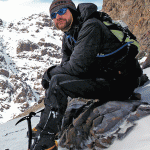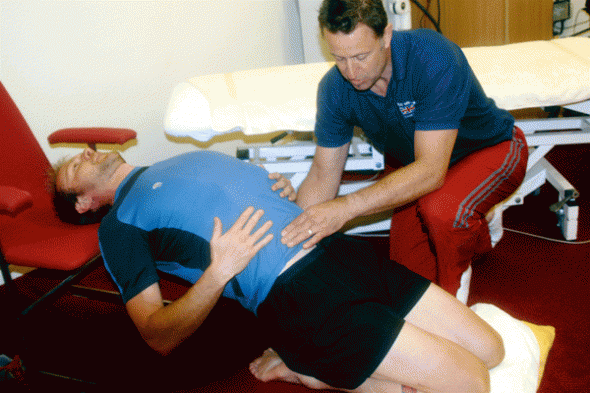Indentifying and correcting any physical weaknesses or imbalances you have can make a big difference to your performance, says Nik Cook
If you’re spending the money and taking the time to embark on a long overseas trek then ensuring you’re in the best possible condition when you hit the trail is a no-brainer. Although many people will argue that you can gain trekking specific fitness on the trip itself, at best this will mean poor performance or suffering early on but, worse case scenario could be injury, inability to keep up and an early flight home. Once you have your trip date set, the more preparation time you can give yourself the better. Significant physiological or postural changes take time.
Tim Deykin (www.sport-med.co.uk), a top sports physiotherapist who’s worked with Olympic athletes, agrees “There’s growing evidence that to achieve significant changes to the fascia that surround your muscles you’ll need to put in 100,000 hours of stretching! The news is better for strengthening muscles and tendons, which will take 6-8 and 12-16 weeks respectively. However you can achieve significant postural benefits via adaptations of your nervous system in as little as 3-4 weeks.”
Even if you don’t have any current injuries, an MOT-style visit to a sports physio will allow you to identify any weaknesses or imbalances and, by addressing them, pre-empt potential problems: “We’d start off by looking at your standing posture from both the front and rear. This would show us any asymmetries such as kinks in the spine or imbalances in the pelvis which could indicate a leg length discrepancy. We’d then look from the side concentrating on any unusual tilting of the pelvis which could be indicative of tight hip flexors.
“We’d also look for any curvature in the thoracic spine which could lead to problems when carrying a pack. I’d then get the subject to go through a series of double and single legged bends. These are a great indicator of any problems with balance, poor glute (buttock muscles) strength or poor core stability. We’d then move onto a deep squat, keeping heels on the floor and feet straight. Ideally, the subject should be able to go all the way down with their backside touching their calves.
“An inability to manage this shows tight calve muscles that can lead to a multitude of problems when walking uphill for extended periods. The leg bends show us an amazing amount which can then be confirmed and added to by videoing the subject walking uphill on a treadmill. By putting a pack on them we’d also be able to see whether they lean forwards from their hips or back which have different implications for the strains their body will be under. We’d then assess range of movement, control and strength of the back as a whole.
“Finally, as many people use trekking poles, we’d finish up by looking at the strength and integrity of the shoulder joint. Once we’ve assessed the subject we would then devise a suitable plan based on the amount of time they had before heading off. If they’d left enough time to correct things through exercises etc that’s the ideal, but there is also the option for shorter term fixes such as heel raises and orthotics if necessary.” says Tim.
SITTING SPECIES
One of the biggest issues that face most of us taking on a trek is going from a primarily seated existence, whether driving or behind a desk, to suddenly spending eight to twelve hours, day in day out, for two to three weeks on our feet. Even if you go to the gym or run every day and spend your weekends on the hills, chances are you’ll still be spending the large majority of your waking hours on your backside. We didn’t evolve as a “sitting species” so, by inflicting this longterm “torture” on our bodies, we significantly compromise our structural integrity and function.
Tim agrees that sitting is to blame for many of our injury woes, “You’re sitting on and squashing a major muscle mass for hours on end. This can lead to a condition known as anoxia where the muscle is literally starved of its blood supply.
The sciatic nerve passes through the buttock region and it’s no coincidence that many people have problems relating to it. Slumping forward when sitting for long hours can lead to an inability to fully straighten up, leading to excessive hollowing of the lower back and abnormal loading. It also shortens the hip flexors and leads to inactive and poorly developed gluteal muscles. ”If you turn up for a trek with your body in this state, compounded by a long haul flight, and then launch straight into long days on the trail with a heavy pack on your back there are a plethora of potential injury pitfalls awaiting you. There are a number of exercises and stretches you can easily do at home to help counter these issues. Tim’s top five that you can work through at home are:
1. Swiss Ball supported crab
2-3 minutes hold x 2
Excellent for countering the effects of being hunched over and also good for balance and core strength. Lay on a swiss ball and extend over it to go into a crab position with your hands and feet on the ground.
2. Dorsal Raises
10-15 reps x 3
Again extending the back and strengthening the vulnerable lower back. Lay on your front and with your hands behind you head gently lift your chest and torso off the ground.
3. Glute Raises
20-25 reps x 3
Targeting your buttock muscles. Lay on your front and, keeping your legs straight , alternate lifting them off the floor. Focus on initiating the movement from your buttocks.
4. Hamstring/Hip counter stretch
2 minutes hold each side x 2
Will stretch out both your hip flexors and hamstrings as well as developing core stability and balance.
Begin by kneeling on one knee and then straighten the other leg out in front of you. Ease into the stretch by sliding the heel of the straight leg further away from you. Resist the temptation to open out your hips and actively twist towards the extended leg to prevent this.
5. Lunges
20 reps x 3
The ultimate functional exercise for all round strengthening and balance. Alternate legs and build up to doing with your pack on.
PACK WEIGHT
Another issue is the pack on your back. In preparing myself and clients for multi-day events such as the 150-mile Marathon Des Sables in the Moroccan Sahara, where all kit has to be carried, one of the key aspects of training is getting your body used to carrying weight. Your walking gait will be significantly affected by your pack, recruiting different muscles groups and altering your centre of gravity. Accounting for this process has to be progressive and consistent, a few weekends on the hills with a pack is not enough. Also, suddenly throwing a full weight pack on your back for a weekend epic is a sure fire route to an injury.
When you know the kit you’ll be required to carry, put your full pack together and find out what it’ll weigh. If you reckon your actual load will be 20kg, and your trip is 10-12 weeks off, start off with a 5kg load and carry it whenever possible. Walking the dog, out shopping, at the gym, the more time you can spend carrying it, the faster your body will adapt. Each week, add 2kg to your load and slowly build up to your final weight. If at the same time you can also work at streamlining your pack and reducing your final load, then so much the better.
The final reason for planning and undergoing a complete all-round strengthening routine prior to your big trip is to help protect you from those freak accidents and random muscle tweaks and pulls. It’s a fact that many athletes scupper their big event, or even career, by lifting a box at home, some overly aggressive gardening or stepping off a kerb awkwardly. Their bodies are so honed to the movements of their sport that actions outside of it are a real concern. Equally, if you focus too narrowly on walking strongly uphill with a pack on your back, then you could be opening yourself up to an injury before you even get on the flight of even the classic ‘lifting pack off the baggage carousal back strain’! A structured all-round strengthening routine will help protect you. Tim believes that an all encompassing holistic approach to conditioning is key, “When I was canoeing competitively I had a coach who was convinced the way forward was lots of upper body work. This felt wrong to me and, the more I learned and experienced, it became obvious that, whatever the sport, balance is everything. When I started working on conditioning with the British Canoeing team, I developed this approach and adopted the mantra Robust or Bust. You can’t be too strong and should aim to make yourself as injury proof as possible whatever you’re doing.”
 ABOUT THE AUTHOR
ABOUT THE AUTHOR
A Peak District-based journalist and triathlete, Nik enjoys fell running, mountain biking and climbing on a daily basis. He has completed the Marathon des Sables, the Himalayan 100 and Canada’s 6633 Ultra.
RELATED LINKS
Training for trekking, part 1


